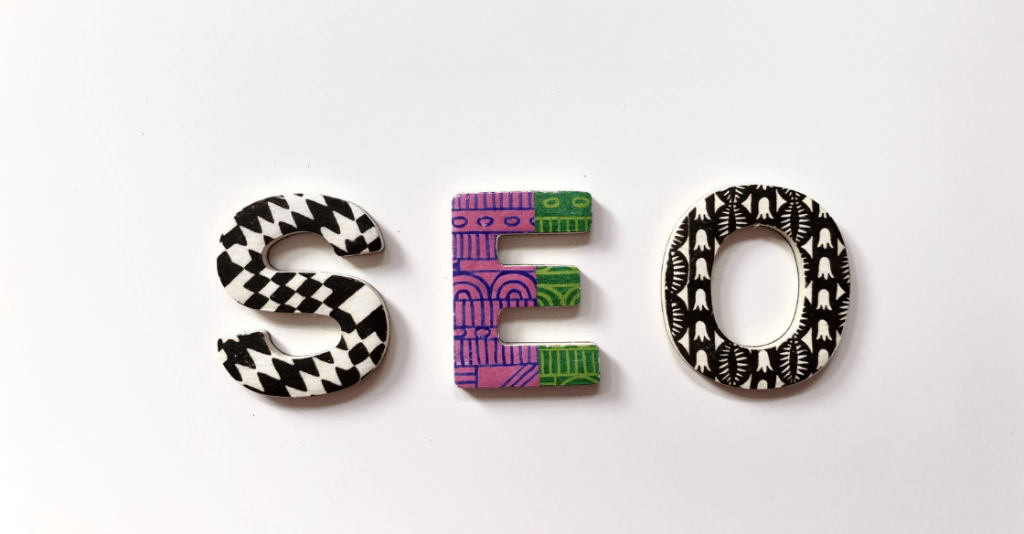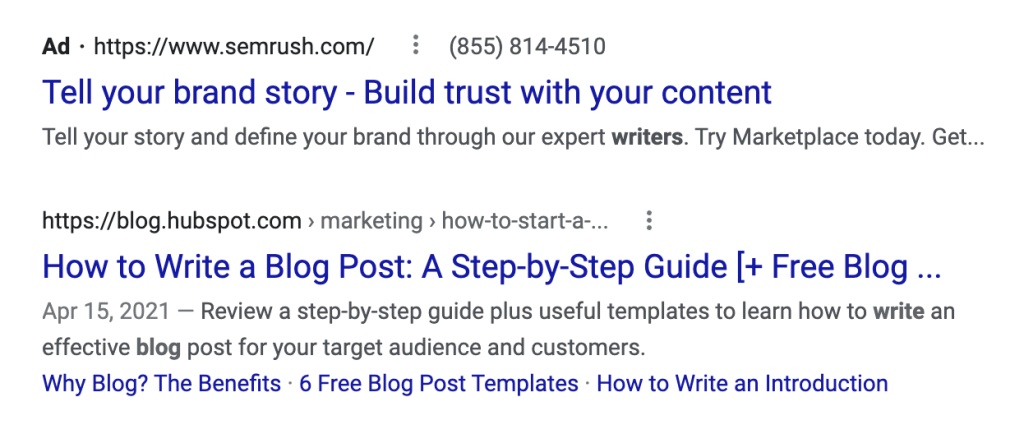If you’ve researched marketing strategies, you’ve likely come across two common terms: SEO and SEM. While the two may sound similar, they are two different strategies that can work together in your marketing.
Let’s look at what SEO and SEM are, their similarities and differences, and how the two can complement your overall marketing efforts.

What is SEO?
Search engine optimization, or SEO, is a common digital marketing strategy that is focused on organic search results. Using a number of different tactics, companies can try to push their website to the top of Google’s search results. This takes a lot of time, dedication, great content, and a knowledgeable team.
SEO is generally broken up into three different categories: on-site SEO, off-site SEO, and technical SEO.
On-Site SEO
On-site SEO refers to the work you do on your site so Google can “read” it. This might include adding keywords into your website copy, adding copy on the back end of your site (such as with alt tags and meta descriptions) and making UX changes to deliver a better experience when people land on your site.
Off-Site SEO
With off-site SEO, the goal is to get quality backlinks from other sites as referring domains. Off-site SEO is an important SEO strategy because it can help send signals to Google that your website is healthy and helpful for users. This process should happen organically if you have good content on your site that people want to link back to, but you can also use services to grow your number of backlinks (especially if you have a newer site that doesn’t have a lot of content to link back to). But be careful to only use reputable sources because Google can tell if you use black hat SEO sites and will penalize you.
Technical SEO
Technical SEO refers to the backend of your site and includes a number of fixes you can do to help your site run smoother and faster. Not only will these fixes help the health of your site, but they may also increase your rankings because Google will see that your site is technically sound.
Some of the many technical SEO tasks you might tackle include:
- Using an SSL/renewing your SSL certificate
- Creating an XML sitemap
- Adding structured data markup to your site
- Registering your site with Google Search Console
- Enabling AMP
- Identifying site crawl errors
SEO is especially tricky because Google is always changing its algorithms to provide users with the best, most helpful content. We most recently saw this with the 2021 Google Core update. Luckily, SEO can work with other marketing departments to help boost their results. Enter: SEM.

What is SEM?
Now that you understand a bit more about SEO, let’s look at it in comparison to SEM, or search engine marketing. In short, SEM is a blanket term that refers to both organic and paid traffic from search engines. Whenever you search for something on Google, you will see both paid results and organic results. SEM covers both of these tactics.
Because SEM also includes paid efforts, you have to consider PPC, or pay-per-click, under this service. To build a PPC strategy, you bid on certain keywords that you want to show up for. For example, if sell white sneakers, you may bid on keywords that are similar to your product. The cost per keyword depends on how competitive the searches are and how much search volume there is for each keyword. When someone clicks on your ad, you pay for what you bid.
One way that SEO and SEM work together is through Google’s Quality Score, which refers to how relevant your landing page or website is to your ads. In order to increase your Quality Score, you should add relevant copy and organic keywords (similar to on-site SEO).

SEO vs SEM: Similarities and Differences
As you can see, both SEO and SEM operate under similar strategies, including keyword research, quality content, and strategic targeting. But while they share many similarities, they are also different in some important ways. Here are some of the similarities and differences between the two strategies:
- Time – One of the main differences between SEM/PPC and SEO is time. Because SEO focuses on organic growth, it can take 6+ months to see results from your efforts. In fact, it takes an average of 2 years to rank on the first page of Google, according to Ahrefs. With PPC, you can rank on the first page of Google almost instantly once you get your campaigns set up. While that doesn’t mean you will instantly get conversions, you will at least have your campaigns ready to go.
- Content – One similarity between SEO and PPC is that both reward quality content. Even if you have the most targeted PPC campaign, you will likely see a high bounce rate if the content on your site or landing page isn’t aligned with your target market. The same is true for SEO – you won’t rank organically if you don’t have quality content on your site.
- Keyword research – For both SEO and SEM, you need to have quality keywords and do extensive keyword research to know who to target. That being said, your PPC keywords may differ from your SEO keywords because people will be searching for different things. For example, someone might search “what are the best white sneakers” for an organic search and “white sneakers” as a paid search.
- Cost – Both marketing strategies will cost money, but PPC will cost actual dollars right away, while the cost of SEO efforts will be more spread out. While you can write a blog for free and hope that it generates traffic, you will likely need to put time and money into your content efforts for them to be worthwhile. If you have a limited budget, you can start with organic SEO efforts until you have a dedicated ad budget for PPC.
How do SEO and SEM Work Together?
In a best case scenario, you have the resources and talent to manage both SEO and SEM simultaneously. They both complement each other by boosting your site traffic and (hopefully) generating conversions. The traffic you gain with your PPC efforts can help your site organically, but you can’t get started with PPC until you have great on-site content and understand your audience using SEO principles.
Tell us: which do you prefer, SEO or SEM? We’d love to hear from you! Shoot us a note to discuss the differences between these two strategies more.
